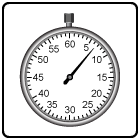


3 scores max per player; No foul language, show respect for other players, etc.
Name | Score | Date | ||
|---|---|---|---|---|
| 1 | ||||
| 2 | ||||
| 3 | ||||
| 4 | ||||
| 5 | ||||
| 6 | ||||
| 7 | ||||
| 8 | ||||
| 9 | ||||
| 10 |
This is a timed game. Your final score is equal to the total score minus time taken.
Game: CHOOSE OR LOSE
Aim: Choose the right answer; beat the clock
Method:
You start the game with 50 points. Each question has 2 to 4 answers. Select the correct answer before your time runs out to score points. Right answers are +10, wrong answers are -2, out of time is -5.
This is a timed game. Your final score is equal to the total score minus time taken.

anonymous 😂😍😂
"Count down in steps of 5 to -100"
CHOOSE OR LOSE game to practice
'Grouped frequency tables' for 7th grade
7th grade / Statistics / Continuous data / Continuous grouped data / Grouped frequency tables
Grouped frequency tables
Data in frequency tables can be discrete or continuous. Discrete data consists of single values, often whole numbers, and is how most data is initially gathered. If there are many data points to process, it becomes useful to group that data into a set of classes of continuous data. Continuous data can be represented in a "Grouped frequency table". Each class covers the data points within a certain range, and the classes together cover the entire range of all the data points. In grouped frequency tables, it is important that the classes cover the entire range of the given data while not overlapping.
The benefit of grouped frequency tables becomes clear when there are so many raw data points that discrete values would become difficult to process. A limitation of continuous data is that individual data points are lost so that exact calculations of the mode, median or range of the original discrete data points becomes impossible.
In this topic you are asked to compare each grouped frequency table to the raw data that it should represent. Many of the tables have deliberate mistakes that you must identify. You can do so by counting up the data points for each class and comparing them to the given frequencies.
In the first question, the raw discrete data points are:
10, 8, 25, 18, 15, 22, 5 ,9
The grouped frequency table splits the data into classes: 1-10, 11-20, 21-30.
The frequency for the 1-10 class is given as 4. We can look through the data points and confirm that there are indeed 4 values within this range: 10, 8, 5 and 9. So that frequency is correct. Checking the 2 other classes shows us that the table does indeed accurately represent the data, so the answer in this case is "yes, the table does match the data".
With our Choose or lose math game you will be practicing the topic "Grouped frequency tables" from 7th grade / Statistics / Continuous data / Continuous data. The math in this game consists of 16 questions that ask you to in each instance decide whether the grouped frequency table matches the raw data.

Our CHOOSE OR LOSE game is a simple activity to help secondary math learners and will improve the speed at which you can solve problems in the given topic. It does not rely on the learner typing in the answer. Rather, the learner must choose the correct answer from a list of 2, 3 or 4 similar answers.
CHOOSE OR LOSE encourages faster problem-solving for common and vital secondary math topics. CHOOSE OR LOSE is a timed game with a leaderboard for each topic at each of the 4 levels on offer. You can play the game with or without audio and robots.
UXO * Duck shoot * The frog flies * Pong * Cat and mouse * The beetle and the bee
Rock fall * Four in a row * Sow grow * Choose or lose * Mix and match

Latest leaderboard entries: Choose or lose




How to play Choose or lose to practice
'Grouped frequency tables' for 7th grade

Our CHOOSE OR LOSE game asks the learner to click on the correct answer from a selection of possible answers before the clock runs down.
- Click on PLAY to start.
- You are presented with a topic question, then a list or grid of 2 to 4 possible answers (depending on the topic you have chosen).
- You must select the correct answer by clicking on it before the clock counts down.
- You have 10 seconds in total to answer each question.
- The clock starts ticking down 5 seconds after the answers have appeared.
- To hear the question again, click / tap on the question box.
- The browser will speak the potential answers on rolling-over them.
- A correct answer gains you 10 points.
- A wrong answer loses you 2 points.
- A time-out loses you 5 points.
- A score is kept of correct answers against number of answers.
- The game is timed, and your final score (points earned minus time taken) is given at the end of the game. Top 10 scores for a topic get you a place on the leaderboard.









